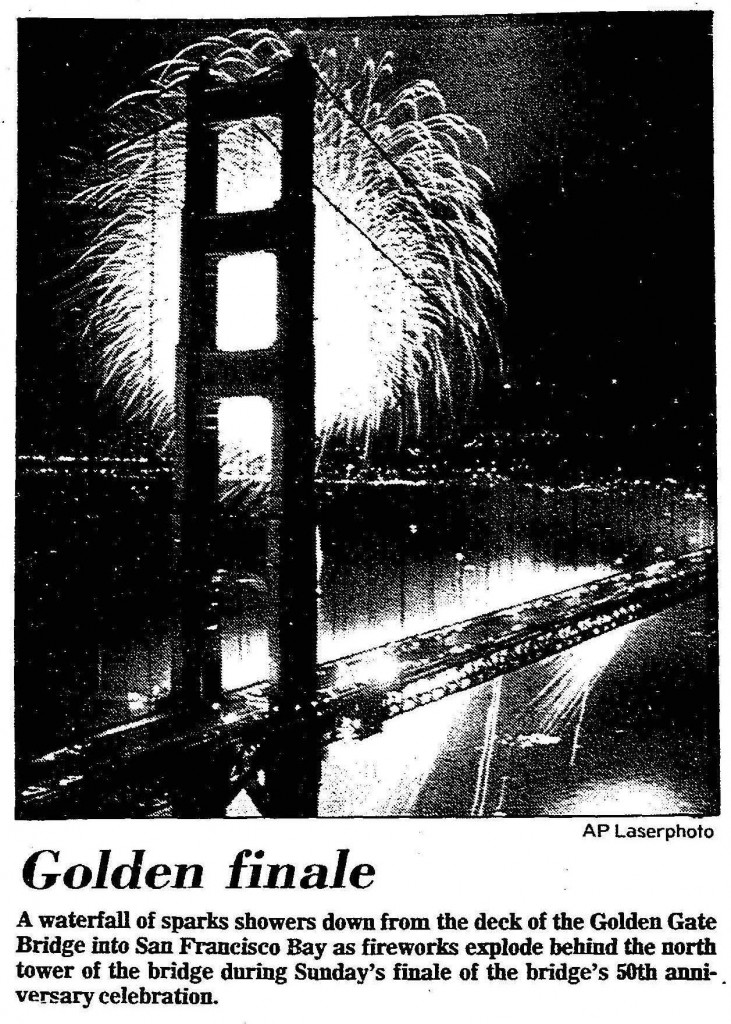The Vermilion Bridge: One of the World’s Most Admired Human Achievements

May 27, 2012, is the 75th anniversary of the opening celebrations of San Francisco’s Golden Gate Bridge. When it opened, it was the longest suspension bridge in the world. It spanned the mile-wide strait entering San Francisco Bay, a feat that had been dreamed of, and deemed impossible, for a century. On May 27, 1937, over 200,000 pedestrians streamed over the bridge in a festive display of wonder and enthusiasm.
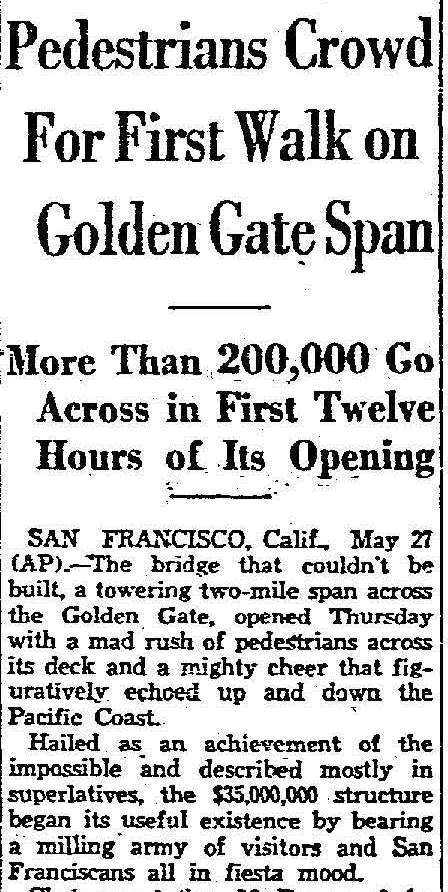
Dallas Morning News (May 28, 1937)
It was a week-long celebration, with bands playing and naval plane flyovers. On May 28th, President Franklin D. Roosevelt, from the White House, flipped the switch activating the traffic controls that permitted vehicular traffic to flow. In the first 24 hours, 31,500 vehicles crossed the span.
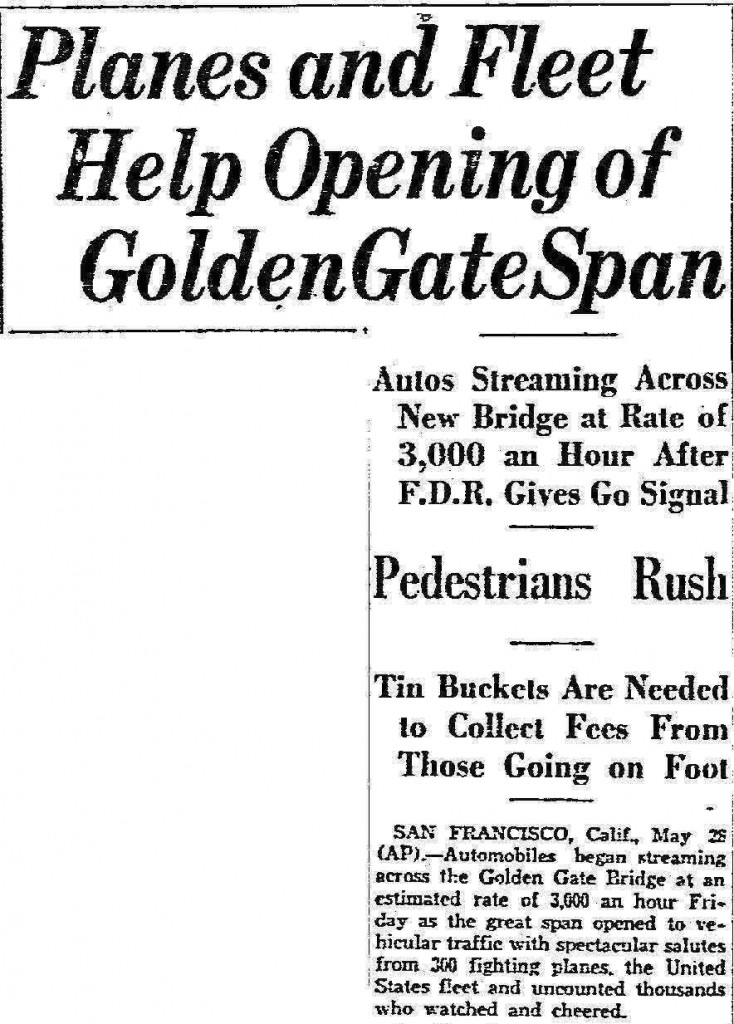
Dallas Morning News (May 29, 1937)
As a man-made edifice that enhances, rather than blights, a beautiful landscape, the Golden Gate Bridge is a symbol of the heyday of American engineering. The project was managed and brought to fruition by Joseph B. Strauss with an “impossible” suspension bridge designed by Leon Moisseiff and Charles Alton Ellis.

Augusta Chronicle (May 24, 1987)
The 4,200-foot-long span was suspended from three-foot thick main cables between two towers as tall as 60-story buildings. The shape of the towers, the streetlights, the railings and walkways were part of a unified Art Deco design conceived by Irving Morrow to be beautiful and utilitarian.
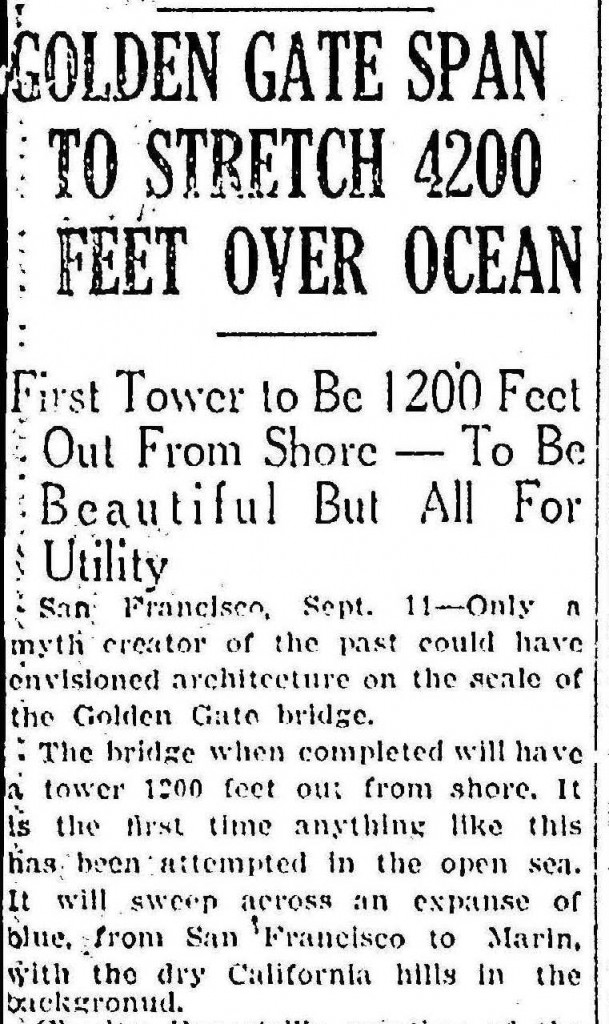
Springfield Republican (Sept. 12, 1934)
Even though the design was streamlined to the essentials, it still required 55,000 tons of steel. The size of the various girders and beams was so great that special cranes were built to facilitate loading in Philadelphia and unloading in Oakland, California.

Times-Picayune (June 4, 1933)
Pennsylvania’s Bethlehem Steel, the largest steel mill in the world at the time, produced the structural steel for the bridge towers and span. The total tonnage eventually exceeded 100,000 tons.
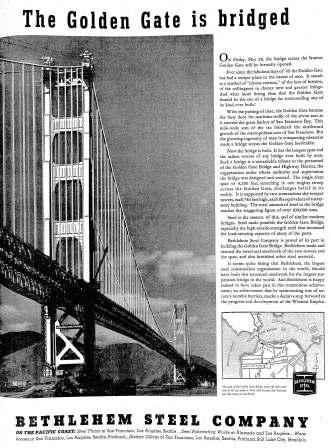
The Oregonian (May 26, 1937)
A suspension bridge is designed to be flexible enough to withstand the weight of traffic, temperature extremes, and strong winds. The Golden Gate Bridge cables provide that flexibility and use 80,000 miles of high tensile steel wire.
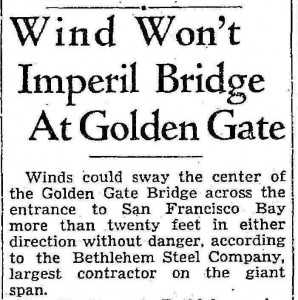
Seattle Daily Times (May 27, 1937)
The towers that hold the cables (seen here under construction) are themselves capable of shifting according to weight load and weather conditions.

Morning Oregonian (Jan. 3, 1934)
On the 50th anniversary in 1987, more than a million citizens turned out for the celebrations, surging on to the bridge before any ceremonies could commence. The weight of the 250,000 pedestrians completely flattened the curve of the span, demonstrating its flexibility and causing alarm.
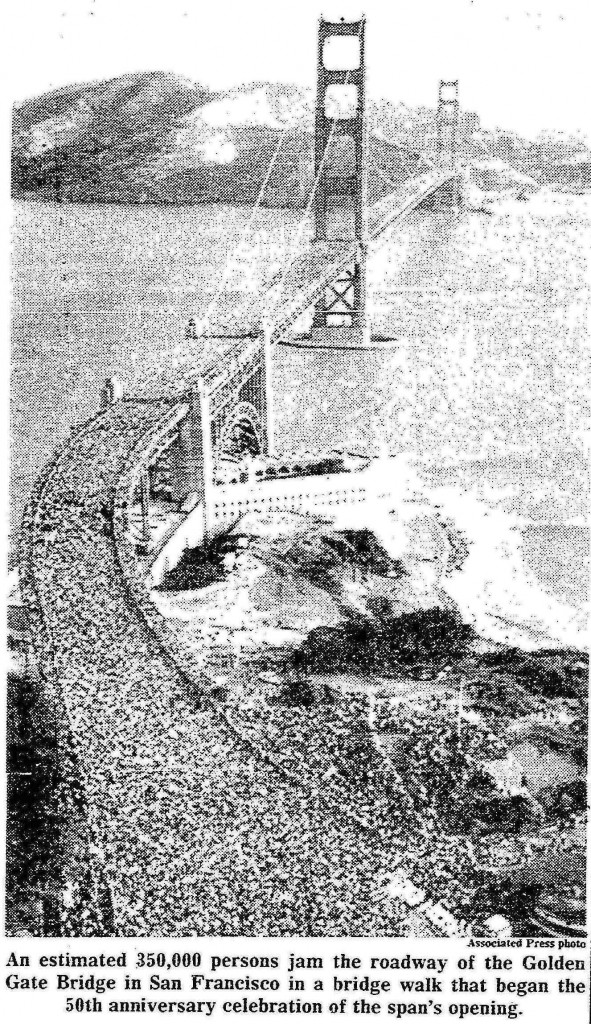
Springfield Morning Union (May 25, 1987)
Aberdeen American News (May 26, 1987)
The Golden Gate Bridge has near mythic status as an emblem of both San Francisco and American engineering. As the 75th anniversary of its opening approaches, the Golden Gate Bridge is safe in its place as one the world’s most admired human achievements—perhaps because it is both utilitarian and beautiful.
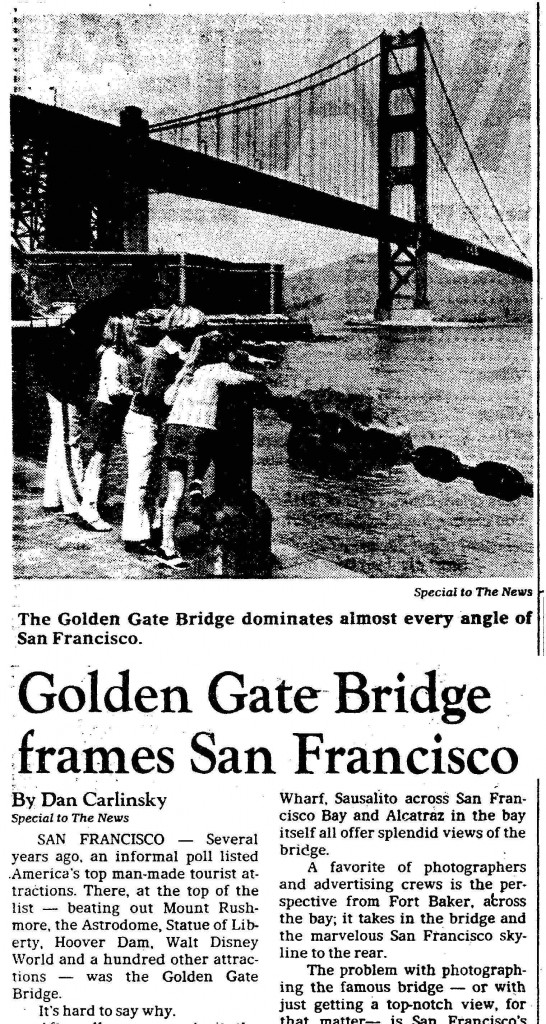
Dallas Morning News (June 24, 1984)
For more information about American Newspaper Archives, the source for the news articles and photographs in this post, please write to readexmarketing@readex.com.

